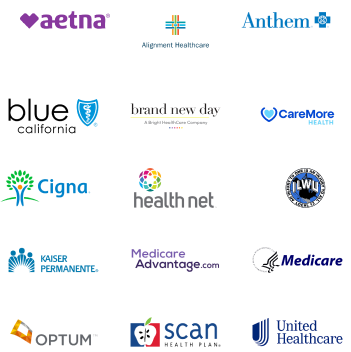Allergy Treatment
More than 50 million people in the US had an allergic reaction last year. Allergic reactions, especially among children of school age, have increased over the past 20 years. Hospitalizations for these allergic reactions have nearly tripled over that time frame. About 15% of school-aged children have experienced an allergic reaction. And 8 foods (listed below) comprise about 90% of the causative agents for those allergic reactions.

What is an Allergic Reaction?
Allergies is a term that covers a large array of symptoms and reflects the body’s response to allergens when the body creates a non-desirable immune response. When we use the term allergic reaction, we think of more severe reactions. In medical terms, this is known as anaphylaxis and is at the end of the allergic spectrum. Typically, when anaphylaxis occurs, critical processes in the body are being hindered.
What Happens During Allergic Reactions?
Specifically, what occurs in allergic reactions in allergic reactions is that the immune system mistakenly perceives a protein introduced into the body as a harmful one. Repeated exposure of this protein causes specific cells in our body to release chemicals, including histamines, that start the cascade of an allergic reaction.
What Causes Allergic Reactions?
- Peanuts
- Shellfish
- Tree nuts
- Eggs
- Milk
- Soy
- Wheat
- Insect envenomations
- Latex
- Certain metals
- Medication (penicillin is the most common)
Diagnosing Allergy Symptoms
Anaphylaxis occurs when the patient’s symptoms are severe and can include: shortness of breath, wheezing, swelling of the tongue or mouth, drop in blood pressure, or extreme weakness.
Less severe symptoms include rash, runny nose, nausea or vomiting or itchiness in your mouth and throat.
Severe allergic reactions can occur within minutes of exposure or take up to hours. Typically, the faster the onset of the symptoms, the more severe. If any of the above symptoms occur within seconds or minutes of a known or unknown allergen exposure, and you should go to an Emergency Room if breathing is compromised. Otherwise, we can treat you effectively at ContinuEM with our advanced management and medications.
Treating Allergic Reactions
Treatment of allergic reactions is typically a multi-faceted approach to address the different components of pathology. In addition, how these medications are given changes depending on the patient's ill.
Types of Treatments
Antihistamines
The cornerstone of treatment as much of the effects of allergic reactions are caused by histamine release. Benadryl (or diphenhydramine) is the most well-known antihistamine, but many others exist. This can be given orally as a liquid or pill, or even IV or IM (in the muscle) if necessary.
Epinephrine
Epinephrine is an injectable medicine that some people with a history of severe anaphylaxis will carry with them at all times (as an Epi-pen). This medicine can be given under the skin or in the vein in the ER or Urgent Care. Epinephrine causes immediate dilation (or opening) of the airways while causing a constriction of the arteries. It is short-acting but incredibly powerful. As it causes heart rate and blood pressure to increase, it is reserved for the most severe reactions.
Steroids
Steroids help to decrease the inflammation caused by allergic reactions. The steroid helps for rashes, lip swelling or swelling in the lungs. Like antihistamines, there are many different ways to give this medication and depends on how ill the patient is.
H-2 Blockers
H-2 blockers are a lesser-known but beneficial medication to help stop the allergic reaction pathway. Specifically, we use famotidine (oral or IV), which most people recognize as a medication that prevents acid reflux. However, we are using the medicine for its added antihistamine properties to stop all the histamine releases in this case.
Albuterol
Albuterol is a medicine that is commonly used for asthma. If a patient has any shortness of breath with an allergic reaction, this is likely because of bronchoconstriction, a medical condition similar to asthma. The inhaled albuterol travels to the patient's bronchi (or smaller airways) and helps to stop the bronchoconstriction and open the airways so more oxygen can be delivered to the blood. This process will also stop wheezing.
Oxygen
Finally, oxygen is typically applied to patients having life-threatening allergic reactions. As airways constrict, it is imperative that higher percentages of oxygen travel through the limited space. In addition, patients with bronchoconstriction may feel better with oxygen applied.
Preventing Allergic Reactions
The best way to avoid allergic reactions is to avoid allergens. To do this, a patient must be able to identify the allergen(s). That means that allergy testing is critical. We recommend that a patient wait two weeks after an allergic reaction to be tested. That way the body has enough time to reset after triggering its immune response. There are various tests that your primary physician or Allergy specialist may employ. These include tape tests (where different allergens come in contact with your skin) or blood tests. Typically if a patient who has had an allergic reaction will have more than one allergen (or protein) that they react to. In the future, it is critical to avoid exposure to this allergen. In addition, repeat testing in the future is recommended as, over time, children can grow significantly out of severe allergies.
Suppose a patient has had a severe allergic reaction or anaphylaxis. In that case, the provider may prescribe them an Epi-pen to keep with them at all times if the patient has another episode of anaphylaxis. This medication is to be injected into the lateral thigh of the patient in case of a developing life-threatening reaction.
We’ve Got You Covered
Our goal is to provide urgent medical care to anyone in the area in their time of need at a cost that is right for them.
Insurance & Pricing
